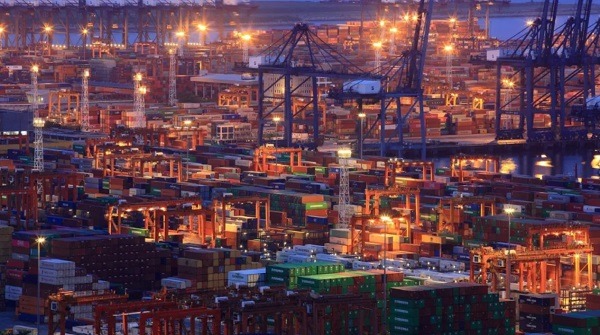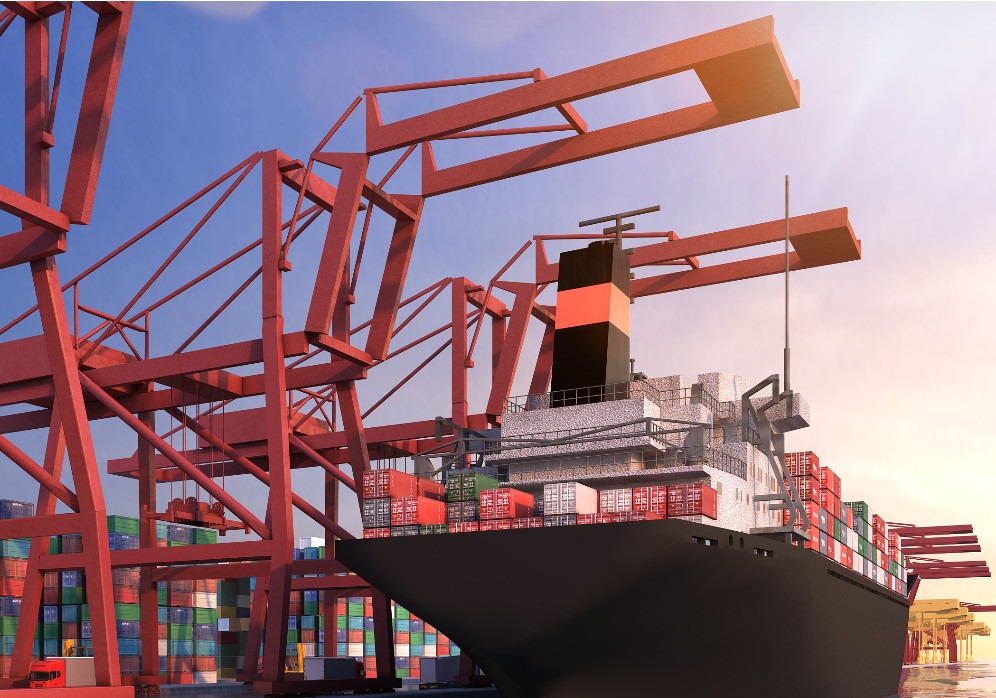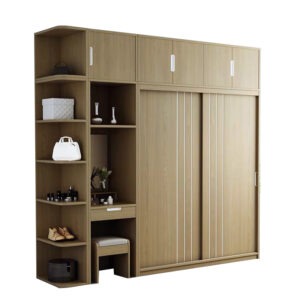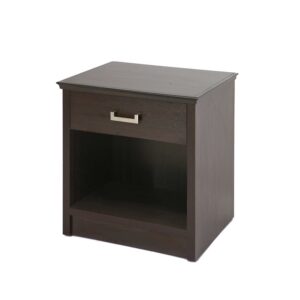Due to various reasons such as vessels, cargo, ports, and other factors, sea shipping companies incur additional expenses or economic losses during the transportation of goods. To compensate for these expenses or losses, sea shipping companies impose additional charges, in addition to the basic rates, known as ocean freight surcharges. There are many types of ocean freight surcharges, and as circumstances change, ocean shipping companies may cancel or implement new surcharges. Here we have compiled 30 common ocean freight surcharges list to help you better understand them, especially when importing goods by container.

01 General Rate Increase (GRI)
GRI (General Rate Increase) is commonly used on South America and US sea shipping lines. Due to various reasons such as ports, vessels, fuel, cargo, or other factors, sea shipping companies incur significant increases in transportation costs. To compensate for these additional expenses, ocean shipping companies impose the GRI surcharge.
02 Peak Season Surcharge (PSS)
Many sea shipping companies impose PSS (Peak Season Surcharge) during busy periods, similar to the crazy increase in sea freight before the Chinese New Year holiday. The peak season for global ocean freight typically occurs from April to November each year.
03 Emergency Bunker Surcharge (EBS)
EBS (Emergency Bunker Surcharge) is an additional fee in ocean freight charges. If the incoterm in international trade is FOB China (Free on Board), the consignee or notify party should afford this cost, not the shipper or supplier in China, as EBS is not considered a local charge at the FOB China port. This EBS cost can be paid upon delivery or prepaid, typically settled in US dollars.
EBS (Emergency Bunker Surcharge) is typically imposed by sea shipping companies when international crude oil prices surge rapidly beyond their threshold of affordability. In situations where market conditions are unfavorable and adjusting ocean freight rates promptly is impractical, EBS serves as a temporary surcharge to compensate for the rapidly rising costs.
04 Terminal Handling Charge (TBC)
THC (Terminal Handling Charge) can be further divided into OTHC (Origin Terminal Handling Charge) and DTHC (Destination Terminal Handling Charge).
05 Original Receiving Charge (ORC)
ORC (Origin Receiving Charge) has both distinctions and connections with THC (Terminal Handling Charge). Take China for example, ORC is mainly applicable at ports in Guangdong Province of South China, such as Guangzhou Nansha, Shenzhen Yantian, and Shekou. On the other hand, THC is applicable at all ports in China. However, ORC and THC are mutually exclusive in China — if ORC is charged, THC will not be charged, and vice versa.
ORC (Origin Receiving Charge) is specifically applicable for shipments originating from ports in southern China, destined for long-haul sea shipping lines such as North America, Central and South America, Europe, and North Africa. However, for shipments from southern China ports to nearby countries or areas such as Southeast Asia, Japan or Korea etc, then it is similar to ports in northern China, only THC (Terminal Handling Charge) is levied.
06 Port Congestion Surcharge (PCS)
When ports are congested or exceptionally busy, the waiting time for vessels and their berthing schedules may be prolonged, leading to increased costs such as tugboat fees and other port-related expenses. This can significantly raise transportation costs. To offset these cost increases, ocean shipping companies may impose Port Congestion Surcharge (PCS) on shippers.
07 Container Imbalance Charge (CIC)
CIC, or Container Imbalance Charge, is imposed by sea shipping companies to offset the costs associated with repositioning empty containers due to imbalances in trade volumes or seasonal fluctuations, resulting in uneven cargo flows and container availability.
08 Destination Delivery Charge (DDC)
In international trade, the seller or shipper only pays DDC (Destination Delivery Charge) under incoterms DDU (Delivered Duty Unpaid) and DDP (Delivered Duty Paid) trade, or it is paid by the buyer or consignee under other incoterms. For example, the buyer or consignee bears all costs and risks of the goods from the time they pass the ship’s rail at the loading port under CIF (Cost, Insurance, and Freight) incoterm, so all expenses at the destination port, including DDC, are borne by the buyer or consignee.
09 Heavy-Lift Additional (HLA)
HLA, also known as Surcharge For Over Weight, refers to a surcharge imposed when the weight of a single piece of cargo exceeds a certain standard (which may vary depending on the freight forwarder or shipping company). This surcharge is applied when special equipment (such as heavy-duty cranes) or special operations (such as padding, reinforcement materials, and manual bundling or reinforcement) are required, making loading and unloading operations more difficult or requiring special handling on the vessel’s stowage. It is levied to compensate for the increased operational costs.
Generally, HLA is applied when cargo exceeds 2 tons, 3 tons, or 5 tons. This surcharge is calculated based on the weight, with higher weights incurring higher surcharges. Additionally, if goods needs to be transferred to another vessel, the HLA is applied each time the goods is transferred.
10 Currency Adjustment Factor (CAF / CAS)
CAF, which stands for Currency Adjustment Factor, is also known as CAS, Currency Adjustment Surcharge. When the currency in which freight is calculated experiences significant depreciation, shipping companies incur substantial losses. To offset these losses, carriers pass them on to shippers or cargo owners by levying a currency depreciation surcharge.
11 Long Length Additional (LLA)
LLA, also known as Over Length Additional or Surcharge for Over Length, refers to a fee imposed when a single piece of cargo exceeds a certain length standard (which may vary depending on the freight forwarder or carrier), requiring special equipment or handling. Loading and unloading such cargo can be more challenging, and special handling may be required for stowage on the vessel, leading to additional operational costs. For cargo in containers, lengths greater than 6 meters are typically considered over-length, with rates increasing incrementally based on the length of goods
12 Emergency Cost Recovery Surcharge (ECRS)
ECRS, also known as “Extreme Weather Operations Surcharge,” refers to a fee imposed by ocean shipping companies to cover the significant increase in transportation and operational costs caused by adverse weather conditions.
13 Container Service Charge (CSC)
Container Service Charge (CSS) is a fee imposed by shipping lines to cover the costs associated with container handling and management services. It includes tasks such as container positioning, chassis provision, inspection, maintenance, and administrative duties. This charge is applied per container and helps shipping lines offset expenses related to maintaining their container fleets and ensuring efficient cargo movement.
14 Fuel Adjustment Factor (FAF)
FAF is generally used for shipping lines to Japan. This surcharge, essentially the same as the Emergency Bunker Surcharge (EBS) mentioned above (No.03), simply goes by a different name.
15 Entry Summary Declaration (ENS)
ENS stands for the European Union’s Advance Cargo Information System. Since January 1, 2011, the EU has enforced mandatory advance reporting of cargo information for all shipments bound for (all goods imported into the EU) or transiting through (all transshipment goods, all goods in transit, all cargo remaining on board, etc.) EU ports. This rule applies to all EU member states.
16 Suez Canal Surcharge (SCS)
Vessels shipping from regions such as Asia, Oceania, and East Africa to Europe typically pass through the Suez Canal. When vessels transit the Suez Canal, shipowners are required to pay a certain toll to the Suez Canal Authority. This cost is passed on to customers by the sea shipping companies in the form of SCS.
17 Panama Canal Transit Fee (PTF)
PTF, similar to above SCS, is applicable for ocean shipping lines from the West America to the East America. Vessels on these routes typically pass through the Panama Canal, and shipowners are required to pay a certain toll to the Panama Canal Authority. This cost is passed on to customers by the sea shipping companies in the form of PTF.
18 Document Fee (DOC)
DOC refers to a service charge levied by logistics service providers or shipping agents for tasks related to customs declaration, document filing, and other related work involved in the import and export of goods.
There are two types of DOC in international shipping, one is charged by the sea shipping company to the shipper at loading port. This fee is currently around 500 RMB (about 70 USD) in China. Another type DOC is charged by the ocean shipping company to the consignee at discharge port. This fee varies depending on the destination ports and the shipping agents or brokers.
19 Automatic Manifest System (AMS)
AMS, also known as the 24-hour manifest system or the Automated Manifest System, is specifically used for shipping routes to the United States, Canada, the Philippines, and Mexico. All goods destined for the United States or transiting through the United States to other countries or regions must undergo AMS filing. Carriers are required to electronically submit accurate and complete cargo manifest information to U.S. Customs at least 24 hours before loading.
20 Temporary Additional Risks (TAR)
TAR can be understood as an additional fee associated with potential war risks in countries or ports with complex international political relations. During special periods or when passing through such ports, vessels may incur temporary surcharges due to increased risks.
21 Advance Commercial Information (ACI)
Canadian Customs regulations require that all goods destined for Canada or transiting through Canada to other countries must be reported to Canadian Customs at least 24 hours prior to loading. This system is known as Advance Commercial Information (ACI) and is similar to the AMS system in the United States.
22 General Rate Increase (GRI)
GRI, generally used on South American and American shipping lines, stands for General Rate Increase. Due to various factors such as port, vessel, fuel, cargo, or other reasons, shipping costs for shipping companies increase significantly. To compensate for these additional expenses, ocean shipping companies impose GRI.
23 Cleaning Charge (CC)
CC, also known as Cleaning Charge or Hold Cleaning Charge, refers to the cost of cleaning cargo holds on a vessel. This cleaning may involve using seawater or freshwater for washing or using cleaning agents. This fee is commonly encountered in LCL sea shipping with containers.
24 Bunker Adjustment Factor (BAF)
Due to the increase in international fuel prices, leading to higher operational costs for sea shipping companies, they impose the Bunker Adjustment Factor (BAF) fee, sometimes also referred to as BUC (Bunker Charge). Most ocean shipping lines have BAF or BUC, but the standards may vary.
25 Transshipment Surcharge
Transshipment Surcharge refers to the additional fee charged by shipping companies to shippers when goods need to be transferred to another vessel en route to reach the designated destination port, which is not the basic port. This fee is typically an additional percentage or specific amount charged on the base freight rate, and the charging standards may vary depending on factors such as the shipping lines, ports, and type of goods.
26 Direct Additional (D/A)
When the volume of goods shipped to a non-basic port reaches a certain level, the shipping company may arrange direct shipment of the cargo to this non-basic port without transshipment. At the same time, the shipping company charges the shipper a direct shipment surcharge.
27 Port Surcharge (PS)
Some ports, due to poor equipment conditions, low loading and unloading efficiency, and other reasons, incur Port Surcharge (PS) from shipping companies for cargo shipping to those ports, also known as Port Additional. It differs from PCS (No.06) in that Port Surcharge is relatively fixed.
28 Optional Surcharge
When the shipper cannot determine the specific discharge port at the time of consignment and requests to choose one port for unloading from two or more ports previously proposed, the shipping company levies Optional Surcharge.
29 Deviation Surcharge (D/S)
Due to unforeseen events such as war on maritime routes, canal closures, or channel blockages, which pose risks to ships and cargo, vessels may take alternative routes, resulting in increased sailing distances and additional expenses for shipping companies. To compensate for these additional costs, shipping companies temporarily charge shippers the Deviation Surcharge.
30 Alternative of Destination Surcharge (ADS)
In international shipping, sometimes the shipper or consignee may requests a change in the originally designated discharge port to another port not previously specified. If the local customs permits and the shipping company agrees, the shipping company will charge ADS for changing the discharge port.











